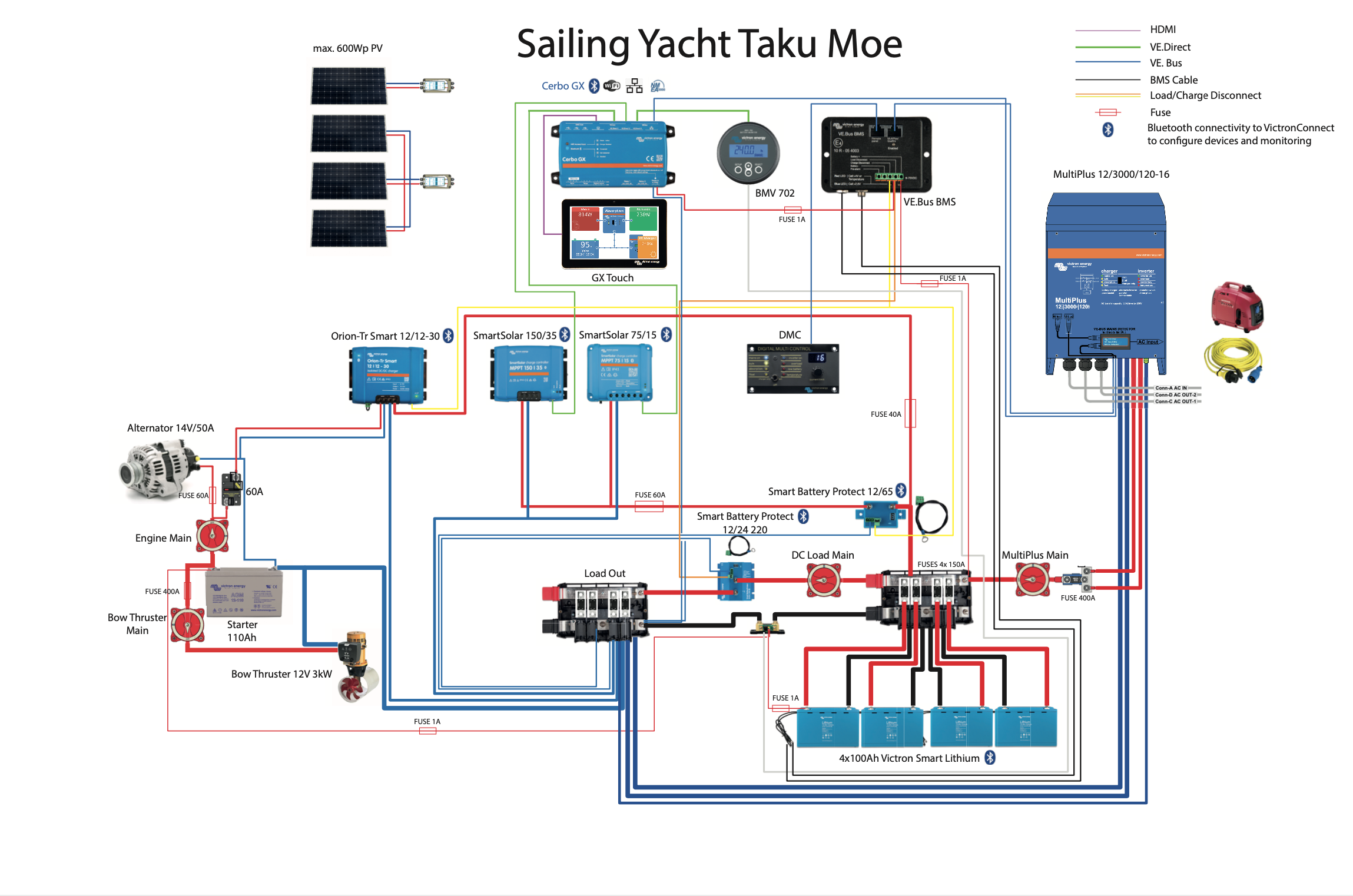Since yesterday the Cerbo GX manual is ready to download here.
Was a bit surprised that the Cerbo is powered by the Load disconnect from the VE.Bus BMS, but that is how the manual reads.
I finally was able to finish the schematic wiring for the new setup.
Maybe someone can have a look and check the schematic and see if it is acceptable?

takumoe_12v_powersystem_v7.pdf
